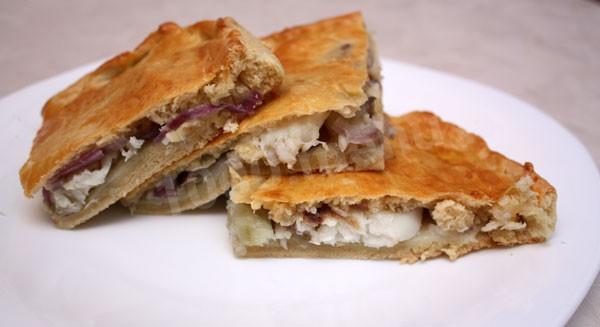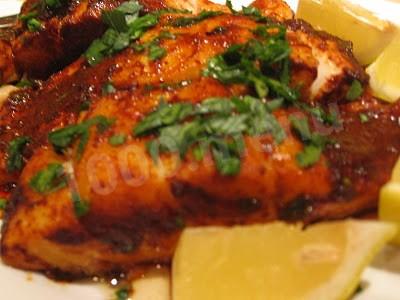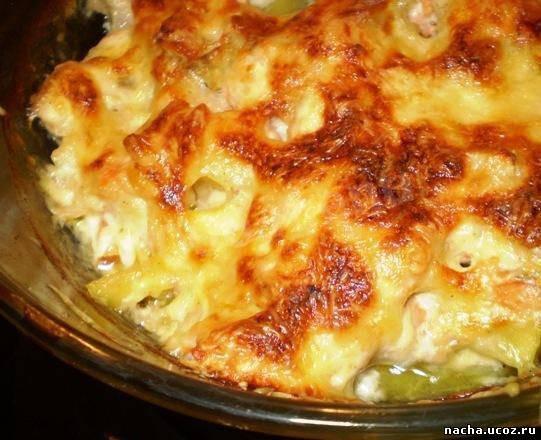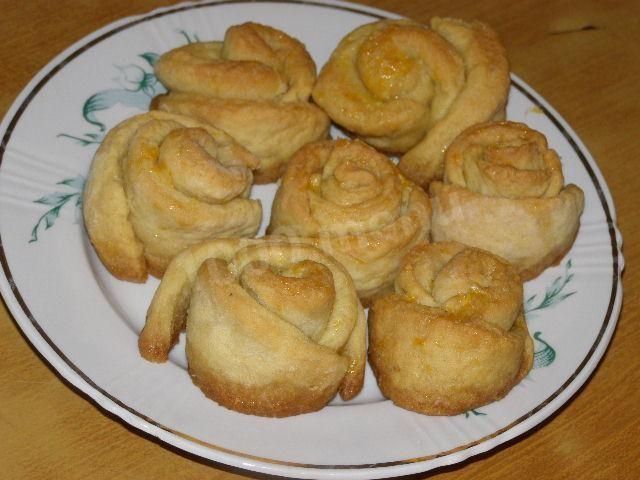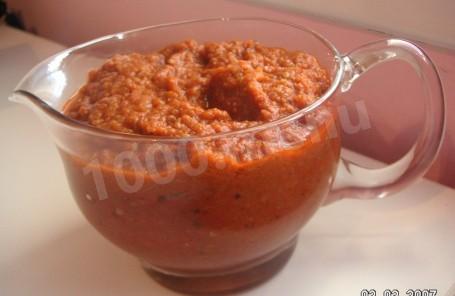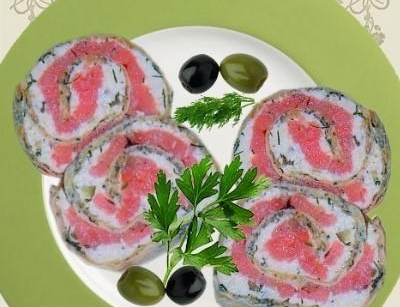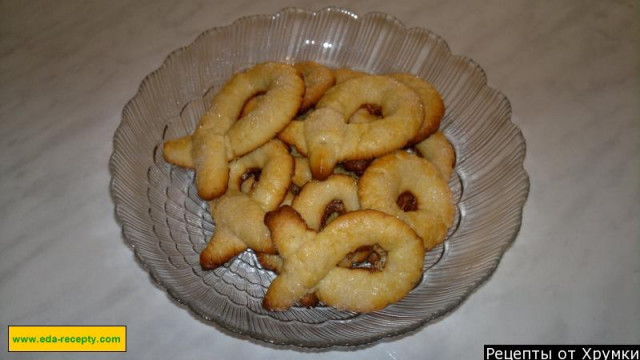Fish pie
Composition / ingredients
12
Servings:
Cooking method
By the way, the preparation of this food is not difficult to prepare. In addition, it is also useful. After all, the main ingredient here is salmon fish. By the way, in our cooking recipe we will use salmon, although it can be replaced with either pink salmon or chum salmon. Their meat is rich in polyunsaturated fatty acids, called vitamins of youth. They contain a lot of vitamins and useful substances.
Well, that was a little introduction about the benefits of salmon. Let's start the process of cooking our fish pie.
First we will prepare the dough. Let's take and chop margarine together with flour with a knife. And when everything turns into a fine crumb, pour water here and knead the dough. Let's put it in the refrigerator for an hour to rest.
By the way, if you don't want the surface of the cake to burn, cover it with thick paper moistened with water and look into the oven more often. If the paper is already dry, moisten it with water again.
Now it's the turn for the fish, which we need to peel from the bones and cut into small slices. Onions and greens have the same fate, finely chop them. Lightly fry the onion in butter.
As a rule, a fish pie is baked for a couple of hours at a temperature of 180-200 degrees. Its readiness is determined by shaking it after pulling it out of the oven. The pie is ready when the fish seems to be walking, lagging behind the crust.
Roll out a layer of dough with a thickness of about 6 mm. The resulting circle will be laid out on a greased mold. It is necessary to pierce it with a fork, in order to avoid lifting it. And put it in the oven for 10 minutes, where there are already 200 degrees. Putting the cooled onion in a bowl with fish, as well as parsley with grated cheese and salt, put it all on the dough. After beating the eggs, cream and salt, pour this over the top of the filling and put it in the oven for 20 minutes.
Then we will cut the finished fish pie into pieces and decorate it at our discretion. Bon appetit!
Well, that was a little introduction about the benefits of salmon. Let's start the process of cooking our fish pie.
First we will prepare the dough. Let's take and chop margarine together with flour with a knife. And when everything turns into a fine crumb, pour water here and knead the dough. Let's put it in the refrigerator for an hour to rest.
By the way, if you don't want the surface of the cake to burn, cover it with thick paper moistened with water and look into the oven more often. If the paper is already dry, moisten it with water again.
Now it's the turn for the fish, which we need to peel from the bones and cut into small slices. Onions and greens have the same fate, finely chop them. Lightly fry the onion in butter.
As a rule, a fish pie is baked for a couple of hours at a temperature of 180-200 degrees. Its readiness is determined by shaking it after pulling it out of the oven. The pie is ready when the fish seems to be walking, lagging behind the crust.
Roll out a layer of dough with a thickness of about 6 mm. The resulting circle will be laid out on a greased mold. It is necessary to pierce it with a fork, in order to avoid lifting it. And put it in the oven for 10 minutes, where there are already 200 degrees. Putting the cooled onion in a bowl with fish, as well as parsley with grated cheese and salt, put it all on the dough. After beating the eggs, cream and salt, pour this over the top of the filling and put it in the oven for 20 minutes.
Then we will cut the finished fish pie into pieces and decorate it at our discretion. Bon appetit!
Caloric content of the products possible in the composition of the dish
- Buttermilk - 36 kcal/100g
- Cream of 20% fat content - 300 kcal/100g
- Cream of 10% fat content - 120 kcal/100g
- Cream - 300 kcal/100g
- Chicken egg - 157 kcal/100g
- Egg white - 45 kcal/100g
- Egg powder - 542 kcal/100g
- Egg yolk - 352 kcal/100g
- Ostrich egg - 118 kcal/100g
- Dutch cheese - 352 kcal/100g
- Swiss cheese - 335 kcal/100g
- Russian cheese - 366 kcal/100g
- Kostroma cheese - 345 kcal/100g
- Yaroslavsky cheese - 361 kcal/100g
- Altai cheese 50% fat content - 356 kcal/100g
- Soviet cheese - 400 kcal/100g
- Cheese "steppe" - 362 kcal/100g
- Uglichsky cheese - 347 kcal/100g
- Poshekhonsky cheese - 350 kcal/100g
- Lambert cheese - 377 kcal/100g
- Appnzeller cheese with 50% fat content - 400 kcal/100g
- Chester cheese with 50% fat content - 363 kcal/100g
- Edamer cheese with 40% fat content - 340 kcal/100g
- Cheese with mushrooms of 50% fat content - 395 kcal/100g
- Emmental cheese with 45% fat content - 420 kcal/100g
- Gouda cheese with 45% fat content - 356 kcal/100g
- Aiadeus cheese - 364 kcal/100g
- Dom blanc cheese (semi-hard) - 360 kcal/100g
- Lo spalmino cheese - 61 kcal/100g
- Cheese "etorki" (sheep, hard) - 401 kcal/100g
- White cheese - 100 kcal/100g
- Fat yellow cheese - 260 kcal/100g
- Altai cheese - 355 kcal/100g
- Kaunas cheese - 355 kcal/100g
- Latvian cheese - 316 kcal/100g
- Limburger cheese - 327 kcal/100g
- Lithuanian cheese - 250 kcal/100g
- Lake cheese - 350 kcal/100g
- Gruyere cheese - 396 kcal/100g
- Parsley greens - 45 kcal/100g
- Whole durum wheat flour fortified - 333 kcal/100g
- Whole durum wheat flour, universal - 364 kcal/100g
- Flour krupchatka - 348 kcal/100g
- Flour - 325 kcal/100g
- Table margarine - 720 kcal/100g
- Cream margarine - 720 kcal/100g
- Milk margarine - 743 kcal/100g
- Low-fat margarine - 384 kcal/100g
- Margarine sandwich - 688 kcal/100g
- Margarine for baking - 675 kcal/100g
- Margarine diet - 366 kcal/100g
- Margarine bold 40 % - 415 kcal/100g
- Margarine - 720 kcal/100g
- Salt - 0 kcal/100g
- Water - 0 kcal/100g
- Onion - 41 kcal/100g
- Fish fillet - 204 kcal/100g

